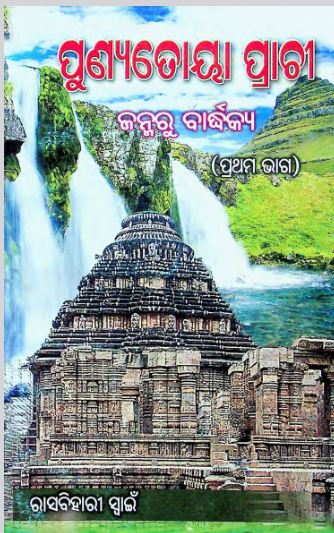The book “Punyatoya Prachi, Vol. 01” by Rasabihari Swain, published in 2022, serves as a profound window into the rich historical and cultural legacy of the Prachi River. Often overshadowed by other prominent rivers in Indian history, the Prachi has silently nurtured a complex tapestry of culture, civilization, and spiritualism. Swain’s extensive research and eloquent narrative in this inaugural volume capture the essence of the river’s life, immortalizing its significance in a format that speaks to both scholars and the general public alike.
Hailing from the coastal terrain of Odisha, the Prachi River is one of India’s ancient rivers. It has played an instrumental role in shaping the historical contours of the region. Swain meticulously unveils the river’s journey through time, from being a pivotal trade route during ancient and medieval periods to its gradual transformation into a spiritual haven. The book delves into the myriad of civilizations that flourished along its banks, documenting the rise and fall of dynasties, the construction of timeless temples, and the evolutionary trajectories of regional art forms.
One notable aspect of Swain’s research is his ability to source rare manuscripts, inscriptions, and oral histories that collectively contribute to a nuanced understanding of the river’s historical legacy. He particularly highlights how the river served as a lifeline for local communities, fostering advancements in agriculture, trade, and social structures.
“Punyatoya Prachi” does more than just trace historical events; it paints a vivid picture of the deep-rooted cultural ethos tied to the river. The author explores various religious rites, festivals, and traditions that have developed over centuries by the riverside. The river is revered as ‘Punyatoya,’ meaning ‘holy river,’ an epithet that Swain justifies through myriad tales of spirituality and divine interventions.
Swain delves into the cultural assimilation seen along the river, where multiple religious and cultural influences have coexisted harmoniously. The text is peppered with descriptions of festivals like Boita Bandana, a maritime festival that speaks of Odisha’s ancient nautical traditions, and the Chandan Yatra, which reflects the devotional fervor of the region.
The author beautifully encapsulates the symbiotic relationship between the Prachi River and the societal development around it. Case studies presented in “Punyatoya Prachi” highlight how villages and kingdoms strategically positioned themselves along the river to leverage its resources. Swain elucidates on how the Prachi not only enabled the settlement of communities but also enriched their cultural and social frameworks.
Moreover, Swain emphasizes the contemporary relevance of the Prachi and calls for collective efforts to preserve its sanctity amidst growing industrialization and ecological neglect. His passionate plea for environmental conservation underscores the timeless bond communities share with this ancient river.
Swain’s narrative skill not only makes “Punyatoya Prachi” a repository of facts but also ensures that the reader is emotionally engaged with the subject matter. The text is supported by riveting anecdotes, evocative imagery, and insightful analyses, making it an enriching read.
In conclusion, “Punyatoya Prachi, Vol. 01” stands out as a monumental work that brings the Prachi River and its multifaceted legacy into the limelight. Rasabihari Swain’s scholarship and storytelling make this book a must-read for anyone interested in delving deep into the historical and cultural veins of Odisha and, by extension, India. The river’s story, as Swain demonstrates, is not just a tale of water and earth but a living, breathing chronicle of human civilization.
Books Info
| Books name | Punyatoya Prachi P.01 |
| Author | Rasabihari Swain |
| No Of pages | 74 |
| Publisher | Rasabihari Swain |
| Publication | 2022 |
| Printed At | Maa Tarini Printers |
| Distributor | NA |

